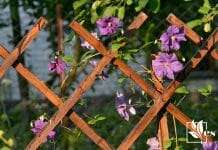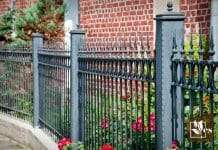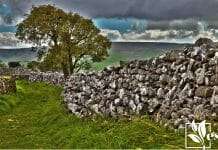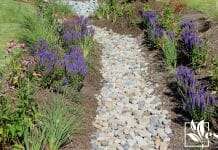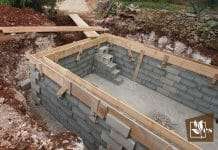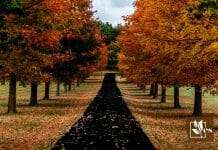Septic tank landscaping ideas can help you make your septic tank look attractive and help it function properly. You can prevent erosion by planting suitable plants and stabilizing the soil more effectively.
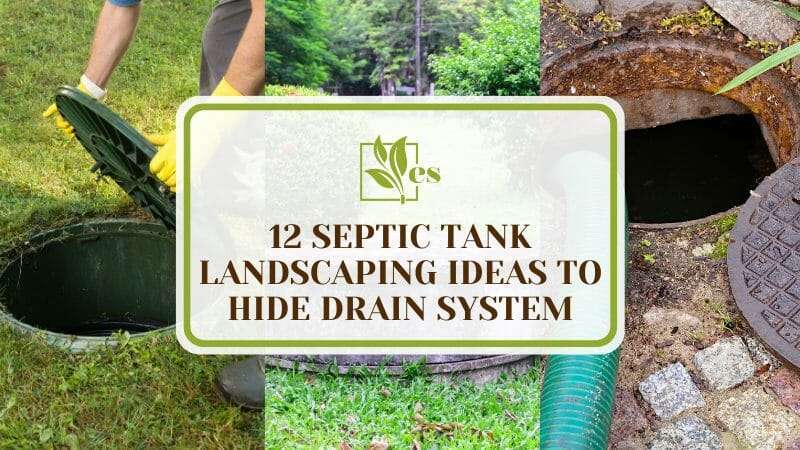
But it is very important to take care of the system when landscaping to avoid any possible damage.
If you are looking for amazing landscaping ideas for your septic system, continue reading this article.
JUMP TO TOPIC
- A List of Septic Tank Landscaping Ideas
- 1. Plant Herbaceous Ground Cover
- 2. Wildflower Meadow
- 3. Choose Woody Plants Very Carefully
- 4. Mark the Access Hatch
- 5. Prepare and Maintain the Soil Properly
- 6. Plant Vegetables Far Away From Septic Field
- 7. Create a Windbreak
- 8. Make a Bog Garden Near It
- 9. Install a Rain Garden
- 10. Place Mulch Around the Septic Tanks
- 11. Planting Rhododendrons
- 12. Consider Planting Liriope
A List of Septic Tank Landscaping Ideas
1. Plant Herbaceous Ground Cover
Drought-tolerant, shallow rooted, and native plants are the best to plant over the drain fields and around the septic systems. Since these plants can grow easily in local conditions, you don’t have to put in too much effort. Moreover, they will bring less disturbance around the system.
It is important to note that this plant’s roots will remain above the septic system. On the other hand, using plants with extensive root systems can easily damage the septic system. This is why you should use plants with shallow roots system, so there are fewer chances of damage.
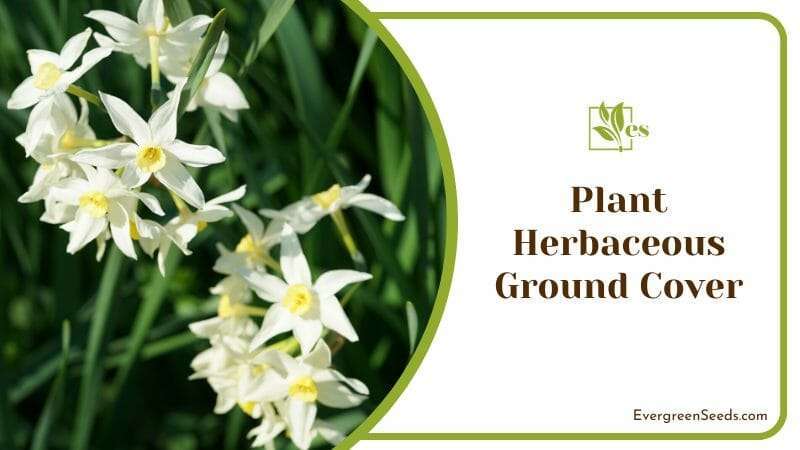
The best thing is that you should look for plants with short grasses. These plants can be bulbs, self-growing annuals, and herbaceous perennials. For example, you can see as under:
Bulbs
Bulbs add beauty to your garden due to their globe-shaped structure. Some examples of bulbs are:
- Tulip
- Starflower
- Iris
- Grape
- Daffodil
- Crocus
- Anemone
Annuals
Annual flowers grow in one long season and start to fall off when the next season starts. Some examples of annuals are:
- Spotted Jewelweed
- Plain Coreopsis
- Larkspur
- California poppy
Perennials
These are the plants that can easily survive more than two years. You can also use the following perennials in your garden:
- Bunchberry
- Yarrow
- Wild ginger
- Violet
- Sweet woodruff
- Stonecrop
- Columbine
Grasses And Sedges
Grasses and sedges are used to beautify as well as protect your garden. Some examples are:
- Texas needle grass
- Sideoats grama
- Prairie dropseed
- Pennsylvania sedge
- Little blue stem
- Blue Fescue
- Appalachian Sedge
Ensure you avoid having the worst plants near your system that can harm it. It is advisable to grow weeds over septic field.
2. Wildflower Meadow
This idea will help you to create a beautiful flower garden. You can do it by turning the area into a pollinator garden or a wildflower meadow.
So, the best way to do it is to plant native wildflowers. They will attract bees, hummingbirds, butterflies, songbirds, and other wildlife. However, you need to avoid using plants and bushes that attract flies.
As a result, all these insects will turn your area into a natural oasis. Most flowering plants will also attract pollinators around your system.
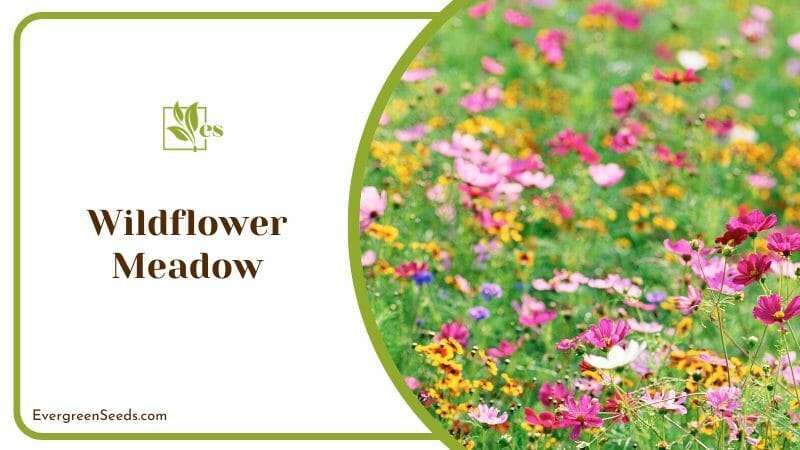
If you select flowers native to your region, they can bring you the best pollinators. Self-growing annuals and herbaceous perennials are also the best pollinators to consider. Also, remember that you should choose plants with shallow roots.
You can also contact reputable seed companies since they offer mixes of wildflower meadow seeds. It will allow you to put in minimal effort when growing many native plants. You can take some suggestions enlisted below:
- Purple coneflower
- Milkweed
- Goldenrod
- Joe Pye Weed
- Clustered mountain mint
- Bee balm
3. Choose Woody Plants Very Carefully
You should note that woody plants consist of aggressive and deep root systems. The hard-growing root system can cause damage easier than any other plant’s roots.
You can plant shrubs with less aggressive roots 10 feet from the septic field. If you choose less aggressive trees, you should keep a distance of at least 20 feet.
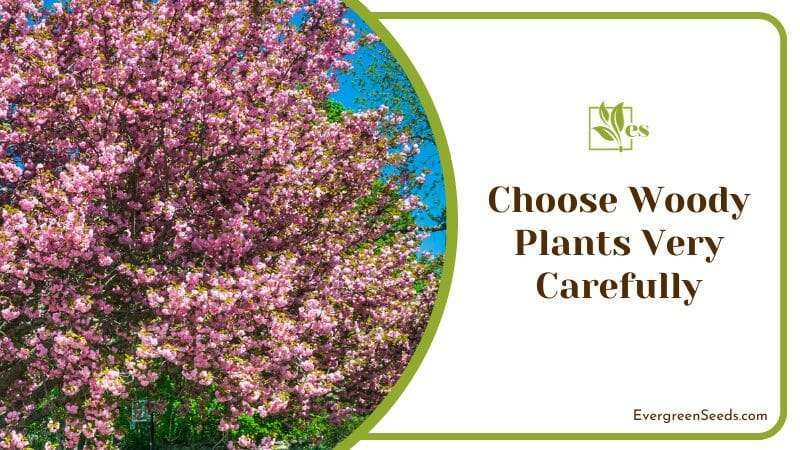
It is important to note that root systems of trees can grow two to four times wider than the canopy, resulting in a very deep root system. Therefore, you should plant these trees away from the system to avoid damage.
You can take some examples of shallow-rooted trees given as under:
- Holly
- Japanese maple
- Eastern redbud
- Dogwood
- Ornamental cherry
- Boxwood
- Azalea
You should not eat the fruits grown on or near your septic field if you plant fruit trees like cherry trees.
4. Mark the Access Hatch
The only reason to landscape the tank area is to hide a slightly visible structure. For example, you can landscape around the septic design to disguise the access hatch.
But you should remember to mark it. It will help you to reduce the destruction and maintain your system easily.
Placing potted plants is the best way to mark the access hatch. They will not only mark it but also help to disguise it. However, you should also take into consideration the weight of potted plants.
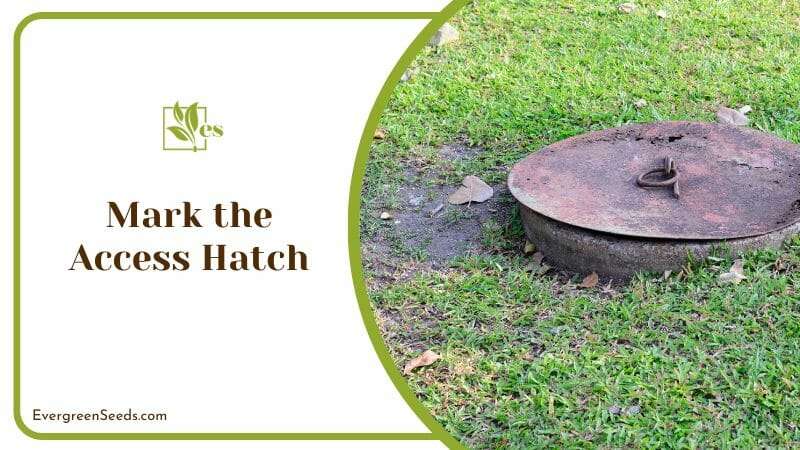
For example, you need to choose potted plants with lightweight or medium-weight. It is because you may need to access the system regularly, so these potted plants should be easy to move around.
You can also choose a lawn ornament, such as a statue, to serve the functional or decorative purpose of giving access to the hatch. It is the most common landscape design.
Nowadays, there are also particularly designed decorative covers in the market. You can buy them to fit over the hatch to turn it into a pretty convincing boulder.
5. Prepare and Maintain the Soil Properly
You should take important measures when taking care of the soil:
- You must wear gloves and carry each activity carefully to prevent damage to your system.
- Not only that, but you should keep cultivation and other such activities to a minimum so that the soil is disrupted as little as possible.
- Be aware of what can you put over a septic tank.
Some people keep plastic sheets, thick bark mulch, gravel, or weed barrier fabric as septic tank cover. You can add a thin layer of soil over the system, but adding more than a few inches can create a problem.
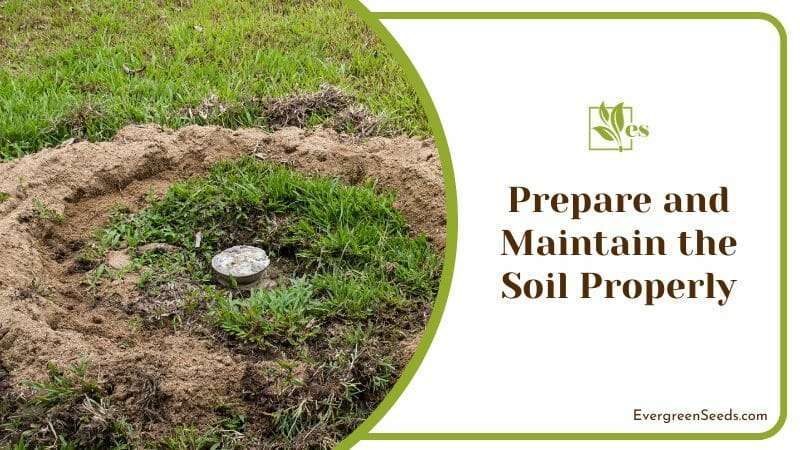
Moreover, you need to minimize the foot traffic and not install a pond around that particular area. You should note that you may need to pump the water tank occasionally. So, there must be an access route for workers to carry out their tasks.
As mentioned above, you can consider choosing low-maintenance plants. You will not have to worry much about maintenance and disrupting the soil. You should water the plants regularly but don’t overwater them. Too much water may cause soil compaction, leading the water to the system. There should be an awareness about how much soil over septic tank is suitable.
6. Plant Vegetables Far Away From Septic Field
You may feel like the field around the system is the perfect place for planting vegetables. But you shouldn’t think about it at all, and do you know why? Well, you see, the wastewater coming from the septic drain field consists of harmful substances such as chemicals, bacteria, and other harmful residues.
When the water full of harmful substances end up in the vegetable garden, it will contaminate the vegetables. In the same way, you are not allowed to plant herbs or fruits near a particular area.
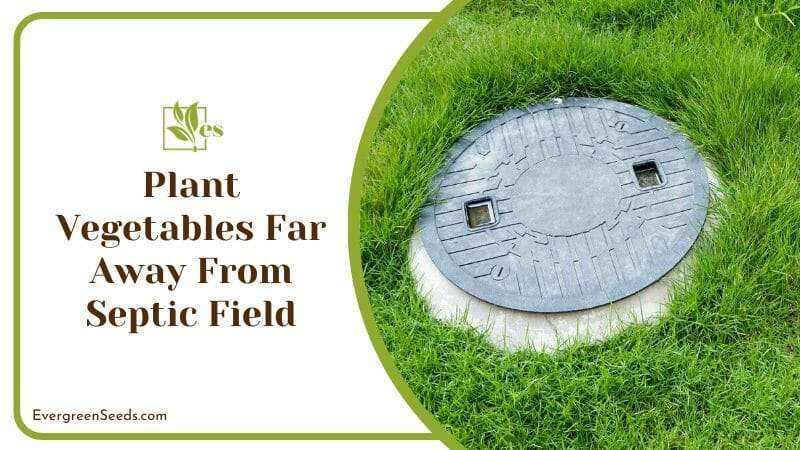
Moreover, you will need to maintain the vegetable plants regularly. The maintenance process may disrupt the soil and hence damage the field around the septic area.
You should note that the raised bed garden can reduce evaporation. On the other hand, evaporation is necessary for the septic design system. Therefore, you should plant herbs, fruits, or vegetables far from it.
When properly landscaped, the area will benefit the tank and make the place attractive.
7. Create a Windbreak
Windbreaks can act as a barrier to protect your pants from damage due to windbreaks and also serve as a great decoration idea to make the place more attractive.

The windbreaks can be made either from natural or artificial materials. For example, you can use some trees or shrubs as natural windbreakers. Or you can also use some man-made materials to be used as windbreakers.
There are more chances of windbreaking if your system is located in a plain or coastal area. Install windbreakers to protect the system from leach fields or windbreaks. The best part about windbreakers is that they can prevent erosion in the soil and keep the soil in place.
8. Make a Bog Garden Near It
Have you ever thought about creating a bog garden around your septic system? Well, it is important that you should know about the bog garden first.
A bog garden is more like a rain garden but contains water with nutrients. It can help make your landscape more attractive and efficiently manage stormwater runoff.
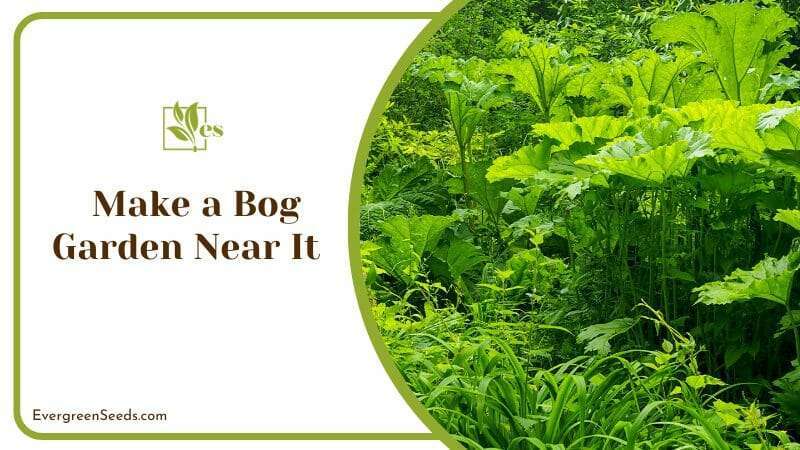
In a bog garden, the water is not absorbed by the plants; instead, the water is stored in a bog that will eventually evaporate.
Bog gardens can also help you to reduce the amount of water reaching the leach field of the septic tank. As a result, you can extend the lifespan of your septic tank system.
9. Install a Rain Garden
You should not miss an opportunity to set up a rain garden when looking for fantastic ways to manage stormwater near the septic tank.
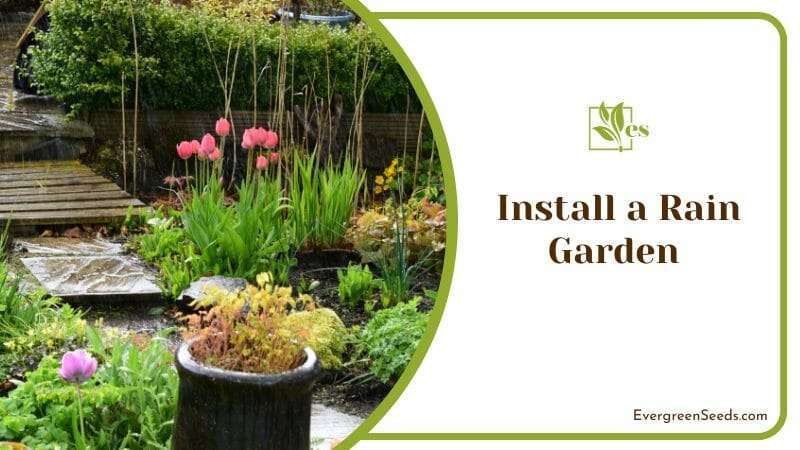
Rain gardens can manage the stormwater and make your field around the septic tank look nicer. However, choosing gardens that should not get damaged in particular conditions is also important.
For example, you must choose rain gardens that withstand wet and dry conditions. Moreover, installing a rain garden can reduce the amount of water reaching the leach field. As a result, the lifespan of your rain garden is extended.
10. Place Mulch Around the Septic Tanks
You should add mulch or wood chips to enhance the amazing visual contrast around the septic tank. It will not only make your area around the septic tank more attractive but will also protect it from any possible damage. For example, mulch can prevent erosion around the septic tank. You can also retain moisture in the soil and keep weeds at bay through a mulch.
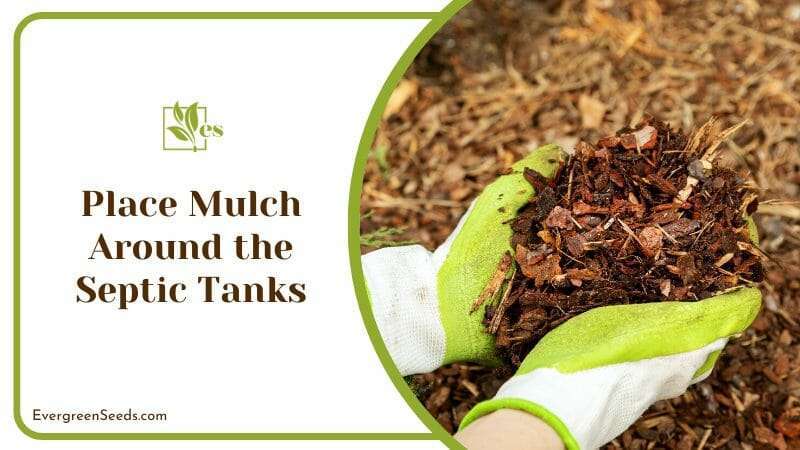
However, it is also important to consider the material of mulch. You need to choose a mulch with shredded bark or wood chips. Simply put, you need to choose mulches with organic materials because artificial mulches can damage the leach fields and septic tanks.
To prevent erosion, you must put a thick layer of mulch around the septic tank. Make sure the mulch is not too close to the tank since it will let the roots grow into the tank.
And remember, you should not add stepping stones over leach field.
11. Planting Rhododendrons
Rhododendrons are gorgeous flowery plants or shrubs to keep around your septic tank. The best part about them is that you can find them in many colors. The variety of rhododendrons is even greater than the roses. So you can choose the ones that you like the most to be around your septic tank.
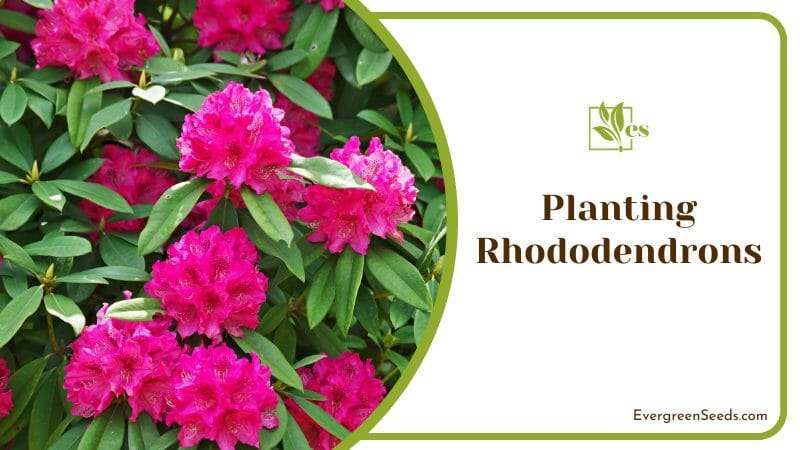
Rhododendrons require loamy soils. Moreover, they extend in a range of 5 to 8 inches deep. However, these beautiful plants are toxic apart from being just gorgeous, o you need to handle them carefully, as animals or bees eating the leaves can become sick.
12. Consider Planting Liriope
Liriope may look like grass, but these are other gorgeous flowers to plant around your septic tank. You can plant them easily in full to partial sun.
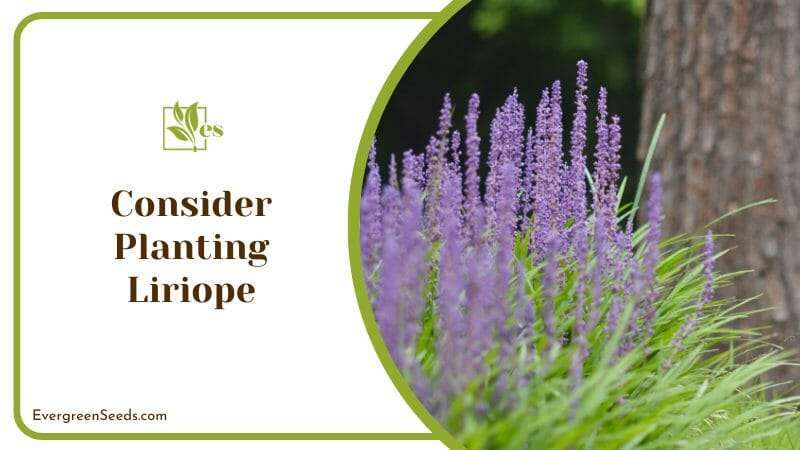
Liriope has a very narrow blooming window from August to September. But the foliage of Liriope is a beautiful and vibrant green. You can also add Liriope companion plants for variety.


